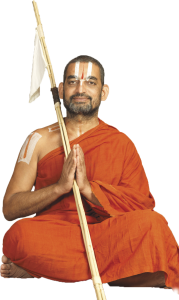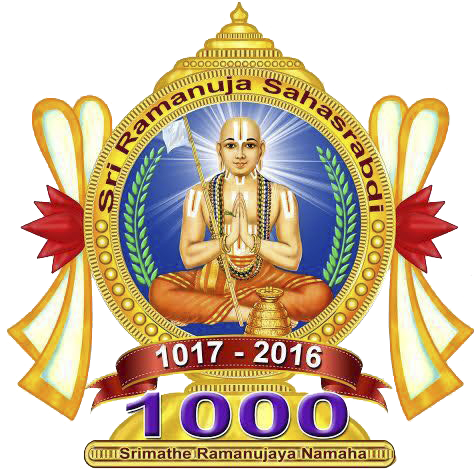 The Tridandam the Jeeyar carries is composed of three split bamboo strips.
The Tridandam the Jeeyar carries is composed of three split bamboo strips.
They represent the 3 realities 1) The Nature; 2) The soul and 3) The God. The three should never be separated. To them is tied the fourth which represents the Sanyasi’s Acharya who acts as the intercessor between God and the Soul.
The person who holds the Tridandam is called a Tridandi. The Tridandam is made of a specially chosen bamboo taken from a bunch of bamboo, from the same stem grown on a mound of earth.
It should be a single piece with no holes and no broken pieces. It is then sliced. One of the reasons for choosing bamboo is it was used (as a flute) by Lord Krishna to play music. God has taken the Venu or the Flute made of bamboo as the medium for propagating his message to the world. It is believed that the bamboo has a Jiva (is full of life). That is also the reason why it is called Jiva Dandam. The Tridandam carries on its top, a piece of white cloth called the Jalapavitam from which the Swami’s filter the water so that they do not harm the living micro organisms.
In this connection it may be mentioned that in Kritayuga, Dattatreya was a Tridandi, as mentioned in Bhagavatam. There is a mention in the text of ascetics carrying the Tridandam. Dattatreya was an incarnation of Sri Maha Vishnu, child of Aditi protecting the Vedas. There are footsteps of Dattatreya in Melkote. On account of the persecution of the then rulers of Tamilnadu, Ramanuja laid down His Tridandam, removed His Kashaya Vastram (Ochre Robes) in Srirangam and proceeded to Melkote wearing white robes lest he should be identified. To regain His asceticism he is believed to have worshipped the foot prints of Dattatreya, wore a fresh piece of kashayam and took the Tridandam after taking a dip in the Dattatreya Pushkarani.



